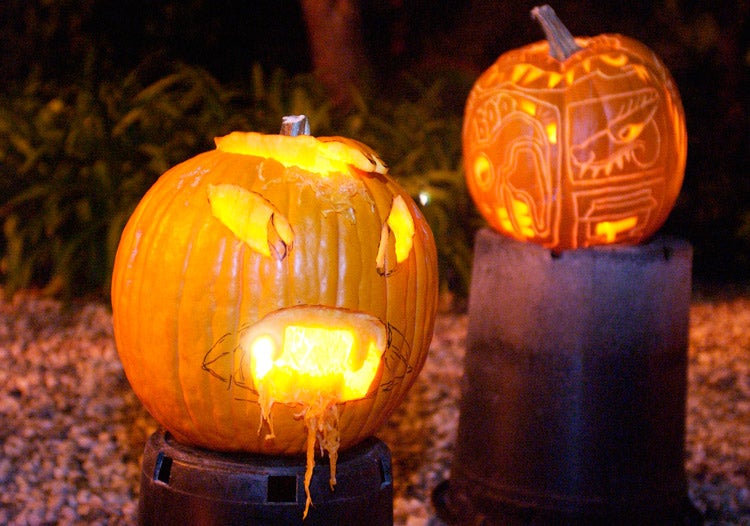October 30, 2014 - By Clifton B. Parker - Halloween is a celebration of both the supernatural and natural worlds in a day and age when imagination is highly valued, says a Stanford scholar.
 Descended from a pagan fire festival, Halloween today suggests how safe the supernatural has become, says anthropologist Tanya Luhrmann. (Photo: Linda A. Cicero / Stanford News Service)
Descended from a pagan fire festival, Halloween today suggests how safe the supernatural has become, says anthropologist Tanya Luhrmann. (Photo: Linda A. Cicero / Stanford News Service)Tanya Luhrmann, a professor of anthropology, explores how people experience God, the supernatural and psychiatric illness. Her books include Persuasions of the Witch's Craft: Ritual Magic in Contemporary England and When God Talks Back,as well as articles on the afterlife. The Stanford News Service recently asked her about the cultural significance of Halloween.
What role did Halloween play in Celtic cultures?
Halloween descends to us from what the great folklorist Sir James George Frazer called the "fire festivals" of Europe, particular days when peasants kindled bonfires and danced around them. There were fires at Lent and fires at Easter; midwinter fires and need-fires. Above all, there were midsummer fires, on the day of the summer solstice, the longest day of the year. Throughout Europe villages built midsummer fires and leapt over them, with magical incantations about height of their crops and the health of their cattle.
Halloween was one of the two great fire festivals celebrated by the Celts. They were a little different. Those two festivals were held six months apart – May 1 and Nov. 1 – on the days between the equinoxes and the solstices. They may have been directed more by the herding calendar than the solar one. The first festival ushers in the green of summer at a time when herds went out to pasture, and the second marks the return of the bitter cold and the time that the herds returned. The May Day, or Beltane, fires seem to have involved sacrifice. Frazer wrote, controversially, that "the traces of human sacrifice at them were particularly clear and unequivocal." The Samhain fires [on Nov. 1] were associated with the dead, and with a night when the walls between the material and immaterial worlds stretched thin.
What does the word "Halloween" actually mean and signify?
The term "Halloween" is a Christianization of this pagan fire festival of the dead. It means "All Hallows' Eve" or "All Saints' Eve." The feast was originally celebrated in May but switched to November under Pope Gregory IV in 835. It was established as a celebration of the saints and of the newly dead who had not yet reached heaven. Going house to house in costume seems to have been part of the evening in some parts of Europe since the 16thcentury.
Why are folklore traditions important to culture and to society – and to children?
Stories are the stuff of human understanding. We live our lives through the way we imagine ours and other ways of being. The most remarkable feature of modern Halloween is that it suggests just how safe the supernatural has become. Kids dress up as ghosts and witches and vampires without the least fear that these invisible beings are real and certainly without the fear that they might be malevolent. Many thousands of Americans describe themselves as witches or "neopagans" and practice what they call magic.
You could even claim that we are seeing a general "re-enchantment" of the world after the many expectations of the death of religion – an explosion of the supernatural in the Harry Potter books, theTwilight series and the many other TV programs on ghosts and folklore and magic, think Grimm. That's because we value our and our kids' imaginative engagements so much – and because in the end, we think that they are fiction. Neither would have been true for our forebears.
In today's world, what are the biggest religious-oriented controversies surrounding Halloween?
Not all Americans treat the supernatural as safe – particularly when that supernatural is associated with witchcraft and demons. American evangelicals above all have sometimes attempted to ban Halloween celebrations, saying that they are a trivialization of a real and pressing evil. Even within the evangelical community, however, these attempts are controversial, and every Halloween there is a flurry of debate.









